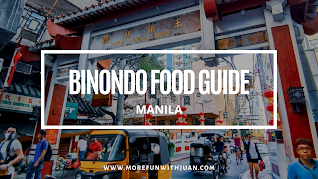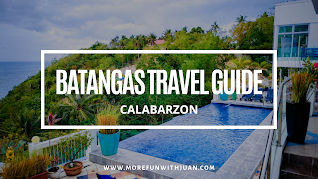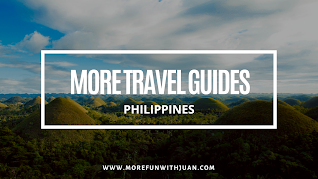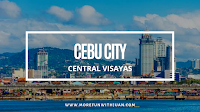Welcome to the Pearl of the East!
The Philippines has been one of favorite countries to visit by many around the world. In 2017, the country attracted a total of 6,620,908 foreign visitors. Tourism is an important sector for Philippine economy. In 2015, the travel and tourism industry contributed 10.6% to the country's GDP.
The country is known for having its rich biodiversity as its main tourist attraction. Its beaches, heritage towns and monuments, mountains, rainforests, islands and diving spots are among the country's most popular tourist destinations.
The country's rich historical and cultural heritage, including its festivals and indigenous traditions. Popular destinations among tourists are Cebu, Boracay, Palawan, Siargao, and many more.
For Your Trip to the Philippines
How much does it cost to visit Philippines? Click below to compare rates and discounts online:
Hotels
Tours & Activities
Essentials
Popular booked by other travelers
ABOUT THE PHILIPPINES
The Philippines, officially the "Republic of the Philippines", is an archipelagic country in Southeast Asia. Situated in the western Pacific Ocean, it consists of about 7,641 islands that are broadly categorized under three main geographical divisions from north to south: Luzon, Visayas and Mindanao.
The Philippines is known for happy Filipinos and their hospitality. That's why many foreigners love to visit the country as many times as they want to.
FACTS ABOUT THE PHILIPPINES
- Capital: City of Manila 14°35′N 120°58′E
- Largest city: Quezon City 14°38′N 121°02′E
- Official languages: Filipino, English
- Recognized regional languages: 19 languages
- Protected auxiliary languages: Spanish, Arabic
- Other recognized languages: Filipino Sign Language
- Ethnic groups (2015):
- 33.7% Visayan
- 24.4% Tagalog
- 8.4% Ilocano
- 6.8% Bicolano
- 26.2% others
- Religion:
- Predominately Christianity (92.2%)
- Islam (5%)
- Demonym(s): Filipino (masculine or neutral), Filipina (feminine), Pinoy (colloquial masculine or neutral), Pinay (colloquial feminine)
- Currency: Philippine peso (₱) (PHP)
- Time zone: UTC+8 (PST)
- Date format: mm/dd/yyyy, dd/mm/yyyy
- Mains electricity: 220 V–60 Hz
- Driving side: right, formerly left before 1947/1948
- Calling code: +63
- ISO 3166 code: PH
BEST TIME TO VISIT THE PHILIPPINES
Tourism in the Philippines is open all-year round. However, due to its tropical weather, you have two options: travel during dry season or wet season.
For me the best time to visit the Philippines is between the months of November and April which are the summer months in this Southeast Asian country. The wet season is from June to October and brings about quite a bit of rain with warm temperatures.
From December to February, the temperatures are around 24°C-31°C. At this time the country is fully accessible, including its many beautiful islands and more remote areas.
VISA POLICY
The visa policy of the Philippines is governed by Commonwealth Act No. 613, also known as the Philippine Immigration Act, and by subsequent legislation amending it. The Act is jointly enforced by the Department of Foreign Affairs (DFA) and the Bureau of Immigration (BI).
Generally, foreign nationals who wish to enter the Philippines require a visa unless:
- He/she is a citizen of a member state of the Association of Southeast Asian Nations (ASEAN)
- He/she is a citizen of a non-ASEAN member state whose nationals are allowed to enter the Philippines visa-free
- He/she is a balikbayan and is only returning to the Philippines temporarily

Most foreign nationals are visa-free for 14 days, 30 days, or 59 days. Of more than 200 countries and territories, 39 need visas to enter the Philippines. See my PHILIPPINE VISA GUIDE for list of countries that do/do not require Philippine Visa.
Check your the visa requirements from your country here:
HOW TO GET TO THE PHILIPPINES
Since the Philippines is an archipelago country, the only way to visit is via air or the sea. But most foreign visitors fly to go to the country.
Currently, there are eleven airports classified by the Civil Aviation Authority of the Philippines as International Airports. There are also hundreds of principal domestic airports and community airports throughout the country. The eleven international airports include:
- Clark International Airport in Mabalacat, Pampanga
- Mactan–Cebu International Airport in Lapu-Lapu City, Cebu
- Francisco Bangoy International Airport in Davao City
- General Santos International Airport in General Santos City
- Iloilo International Airport in Cabatuan, Iloilo
- Kalibo International Airport in Kalibo, Aklan
- Laoag International Airport in Laoag, Ilocos Norte
- Ninoy Aquino International Airport in Pasay / Parañaque
- Puerto Princesa International Airport in Puerto Princesa
- Subic Bay International Airport in Morong, Bataan
- Zamboanga International Airport in Zamboanga City
You can also COMPARE AIRLINE TICKET PRICES HERE.
GETTING AROUND THE PHILIPPINES
Land transportation in the Philippines is administered through various means such as trains, jeepneys, tricycles, taxis, buses, and many others. Various Philippine expressway network have been established throughout the country to hasten land transportation.
Rail transport in the Philippines is mostly administered by the Philippine National Railways, while the Philippine expressway network and the Philippine highway network are mostly administered by the Department of Public Works and Highways.
However, the easiest way to find a transport for your tour is by booking online tickets here:
Powered by 12Go system
- Manila → Baguio
- Baguio → Manila
- Manila → Boracay
- Boracay → Manila
- Manila → Coron
- Coron → Puerto Princesa
- Manila → Cebu
- Manila → Sagada
- Manila → Vigan
- Puerto Princesa → El Nido
- Cebu → Bohol
Loading...
PHILIPPINES TOP TOURIST DESTINATIONS
YOU MAY ALSO WANT TO CHECK
- 10 Must-See Sights in Ilocos Norte
- 10 Ilocano Food That Will Make You Crave For
- Manila to Bataan in Less Than an Hour
- Catanduanes Complete Travel Guide
- El Nido Travel Guide - A 4,500 PHP Itinerary
WHERE TO STAY IN THE PHILIPPINES
YOU MAY ALSO WANT TO CHECK
- Top 10 Best Places to Stay in Baguio City, Philippines
- Top 10 Best Hotels and Resorts in Bolinao, Pangasinan
- Top 10 Best Hotel and Resorts in Boracay
SEE ALSO
Some items can also be bought or rented from stores and services provided by the tourism board in the country.
- Things to do in MANILA
- Things to do in CEBU
- Things to do in BORACAY
- Things to do in PALAWAN
- Things to do in DAVAO
- El Nido Island Tour A: Big and Small Lagoons
- El Nido Island Tour B: Snake Island & Cathedral Cave
- El Nido Island Tour C: Secret Beach and Helicopter Island
- El Nido Tour D in a Luxury Catamaran
WHAT TO BRING
To make the most of your visit in the Philippines, we recommend you to pack and bring with you the following:- Plenty of sunscreen (minimum SPF 30)
- A pair or two of flipflops for walking around town or going down to the beach
- Hiking/walking boots for your adventures into the highlands
- Mosquito repellent
- A quick-dry towel
- Your swimsuit and a spare to dry out
- Snorkel mask (though you can hire one almost anywhere)
- Water bottle to stay hydrated
- Breathable, light layers of clothing
- Waterproof camera and charger/power bank
- Waterproof day bag for all of your island-hopping adventures
Some items can also be bought or rented from stores and services provided by the tourism board in the country.
YOU MAY ALSO WANT TO CHECK
- Promos and Discounts You Can Use For Your Travel
- Important Contact Numbers in the Philippines
- List of Bus and Ferry Operators in the Philippines
- Philippine Weather Update
- COVID-19 tracker in the Philipipnes
IMPORTANT NOTE: The rates, contact details and other information indicated in this post are accurate from the time of writing but may change without IMFWJ's notice. Should you know the updated information, please message us on Facebook.
WHERE TO STAY IN THE PHILIPPINES:
Click here to subscribe to our YouTube Channel.
Visa policy of the Philippines Philippine Registry of Cultural Property List of festivals in the Philippines Arts of the Philippines Landmarks of the Philippines Culture of the Philippines Cuisine of the Philippines List of beaches in the Philippines Pilipinas Kay Ganda Built and Natural Dambanas Suyat Scripts of the Philippines Architecture of the Philippines List of protected areas of the Philippines List of Ramsar sites in the Philippines Biosphere reserves of the Philippines Spanish Colonial Fortifications of the Philippines Intangible Cultural Heritage of the Philippines Lists of Cultural Properties of the Philippines Archaeology of the Philippines National Commission for Culture and the Arts List of national parks of the Philippines World Heritage Sites in the Philippines List of mosques in the Philippines Ship burial in Asia National Artist of the Philippines National Living Treasures Award (Philippines)
Visa policy of the Philippines Philippine Registry of Cultural Property List of festivals in the Philippines Arts of the Philippines Landmarks of the Philippines Culture of the Philippines Cuisine of the Philippines List of beaches in the Philippines Pilipinas Kay Ganda Built and Natural Dambanas Suyat Scripts of the Philippines Architecture of the Philippines List of protected areas of the Philippines List of Ramsar sites in the Philippines Biosphere reserves of the Philippines Spanish Colonial Fortifications of the Philippines Intangible Cultural Heritage of the Philippines Lists of Cultural Properties of the Philippines Archaeology of the Philippines National Commission for Culture and the Arts List of national parks of the Philippines World Heritage Sites in the Philippines List of mosques in the Philippines Ship burial in Asia National Artist of the Philippines National Living Treasures Award (Philippines)




































No comments
Let us know your thoughts!